The 7 Best Exercises to Build Brute Strength
Any veteran lifter will tell you there’s weight-room strong, then there’s do-anything strong. Some guys just have that brute strength—the ability to move awkward, ungainly loads in positions where you often don’t have a lot of leverage. Whether you’re an average dude or a veteran shot-put thrower, brute strength is the ultimate test of just how much you can do.
While most people frequent the gym to build a better physique (e.g. bigger arms, a broad chest, developed legs, and the coveted six-pack), other gym-goers make it their mission to improve strength.
“Brute strength is basically pure, unthinking, animalistic strength that’s available any time,” says Robert Herbst, personal trainer, coach, and 18-time world champion powerlifter.
Herbst recommends incorporating the following seven exercises into your strength program. But take note: “You have to suffer to do this!” he says. “You have to make your body adapt. If you want to be in the brute-strength club, you have to walk the walk,” he says.
After a successful training cycle, you have to deload for a couple of weeks to come back stronger than ever.
Best Strength Exercises
1. Deadlift

James Michelfelder
How to Do It
- To start, place the instep of your feet directly under the bar, toes slightly pointed out, and knees soft.
- With straight arms, hinge the hips back into roughly a half-squat to reach the bar, keeping your head up.
- To initiate the lift, brace your abs, pull the “slack” out of the bar (so it comes up against the plates), and flex your lats.
- Press your feet into the floor as you bring the bar up along the legs, pushing your hips forward once the bar clears the knees and clenching your glutes at the top.
- With control, lower the bar back down to the starting position.
- That’s 1 rep.
2. Barbell Back Squat
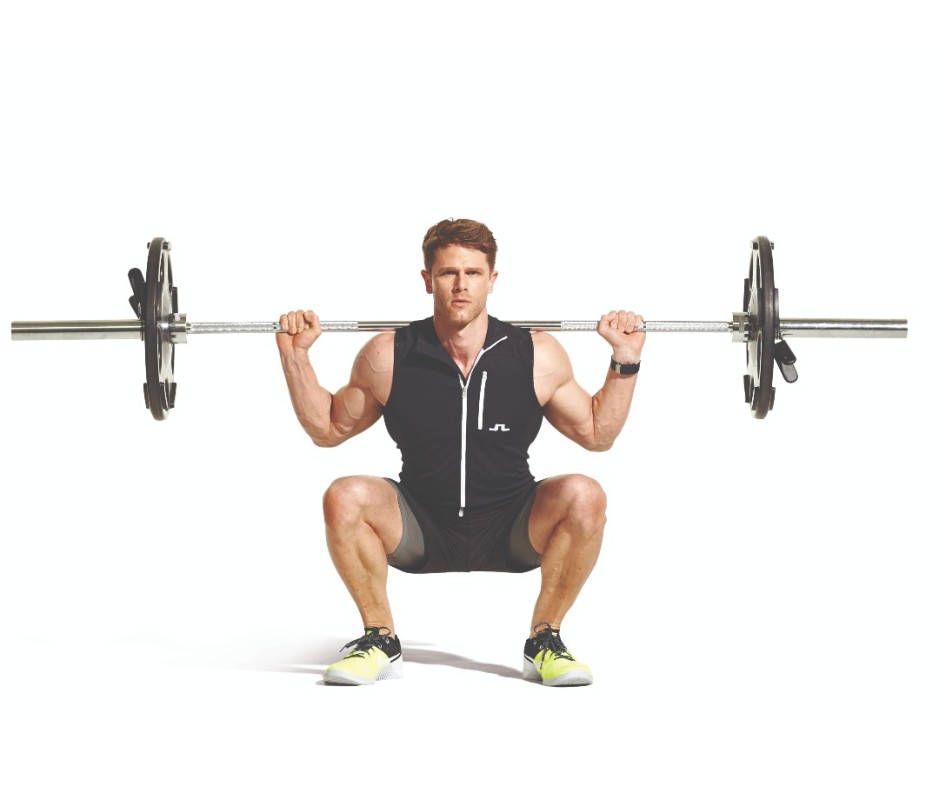
James Michelfelder
How to Do It
- To make sure you get low in your squat, start with your feet slightly wider than shoulder-width and toes slightly turned out.
- Set the bar on your shoulder blades, step away from the J-hooks, and take a deep breath while bracing your core.
- Lower yourself down as if you’re sitting in a chair with your knees straight out.
- When you hit the bottom, use the stretch reflex to blast out, driving your hips forward and keeping your head up.
- That’s 1 rep.
3. Barbell Bench Press
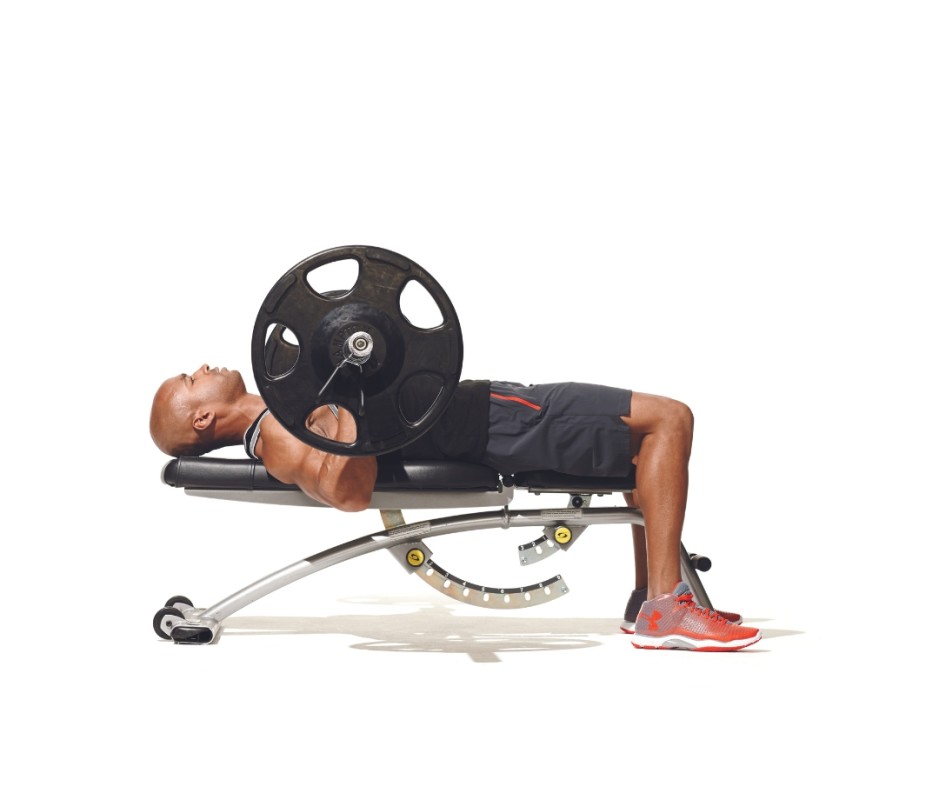
James Michelfelder
How to Do It
- To start, lay on a flat bench press and grip the bar slightly wider than shoulder-width apart.
- Squeeze your shoulder blades together, maintain the arch in your back, and keep your glutes in contact with the bench the entire time.
- Squeeze the bar to activate the traps and tuck your elbows as you lower the bar, bringing it in line with your chest.
- Explode the bar up and slightly back so it locks over your chin.
- Thats 1 rep.
4. Barbell Shoulder Press
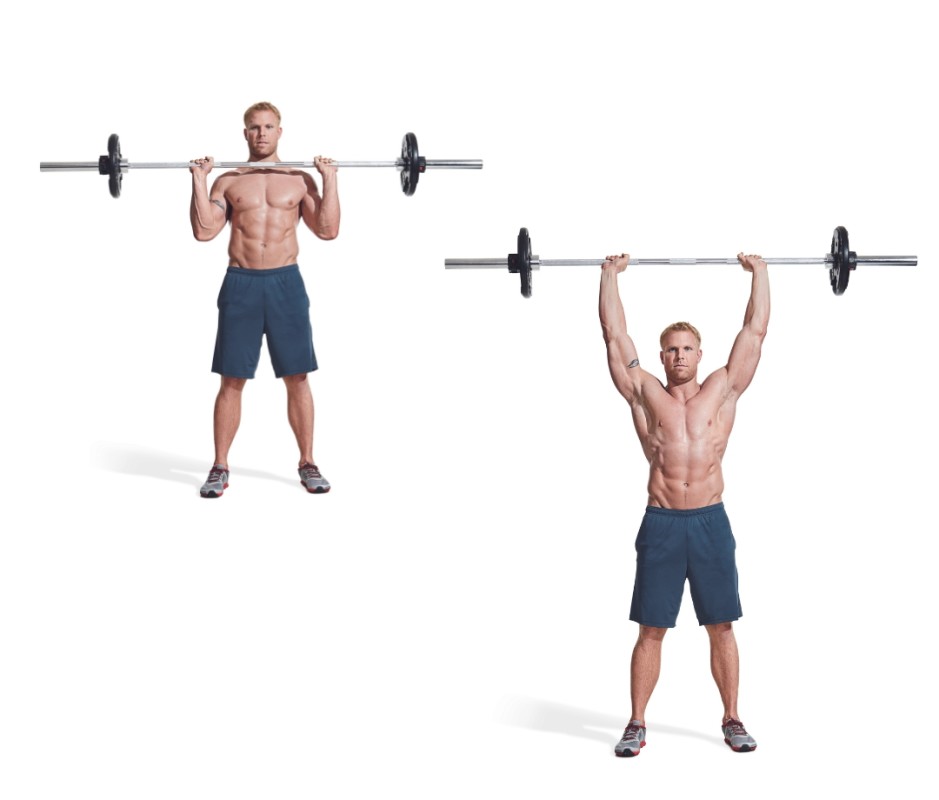
Beth Bischoff
How to Do It
- Stand either with feet shoulder-width apart, or staggered one in front of the other to prevent arching the lower back, to start.
- Brace your core and press the barbell overhead as you exhale.
- Lower the bar back down to your collarbone, chin, or the middle of your face, if going too low stresses out your shoulders.
- That’s 1 rep.
5. Bentover Barbell Row
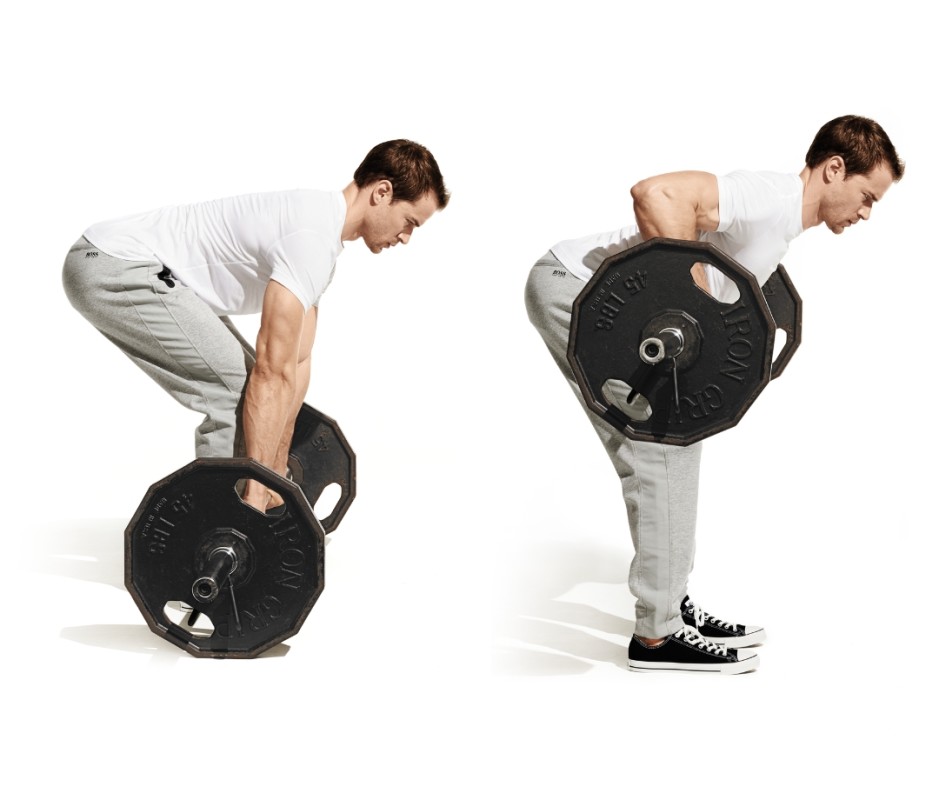
James Michelfelder and Therese Sommerseth
How to Do It
- To start, stand while holding a barbell with a double overhand grip.
- Lift the bar from the rack and hinge forward until your torso is slightly above parallel to the floor.
- Lift the barbell up towards your sternum, keeping your elbows tucked.
- Pause and hold at the top of the movement and then slowly lower the barbell back down.
- That’s 1 rep.
Pro Tip
“Form should be as strict as possible—no jerking the weight up,” says Herbst. “Only with very heavy weight should you use a little pop to get the weight going.”
6. Farmer’s Walk
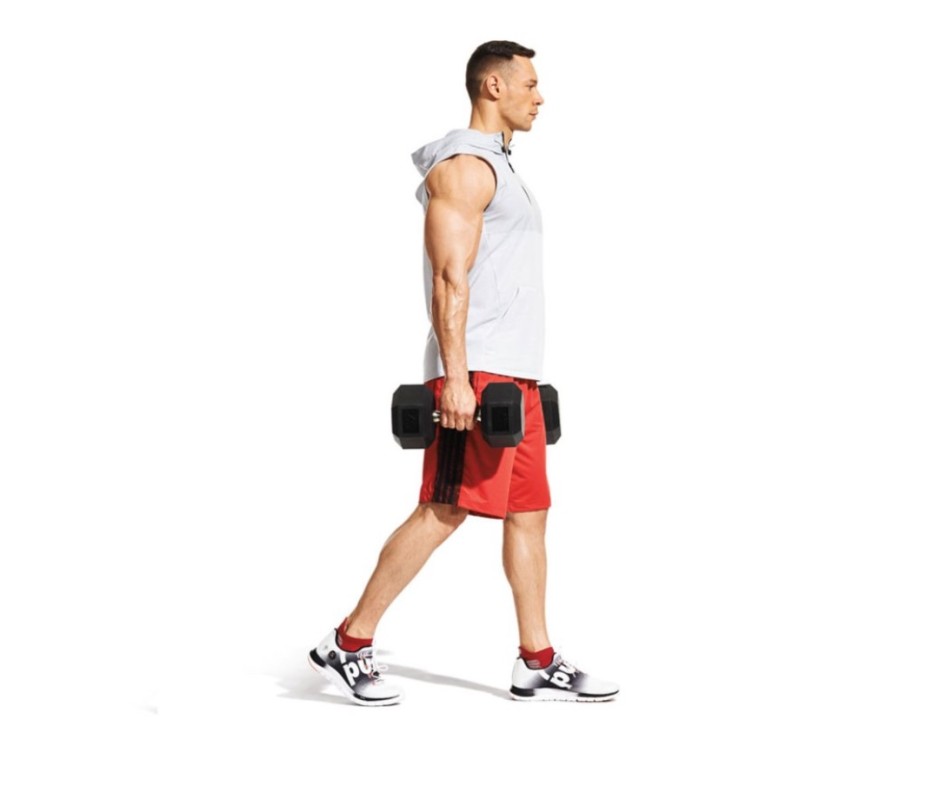
James Michelfelder
How to Do It
- To start, squat down and grab a dumbbell in each hand.
- Engage your core and pull your shoulder blades back.
- Step forward and begin walking keeping your head up and core engaged throughout the movement.
- Continue walking for your desired time or distance.
Pro Tip
“A good starting weight is one half of your max deadlift,” Herbst says. “So if you deadlift 400 pounds, it would be 200 pounds, or 100 in each hand.” Work up to body weight in each hand—or more. “Keep your abs tight as if you are bracing yourself to be punched,” says Herbst. “Don’t let your upper back round, because that’ll put too much stress on your spine.”
7. Sledgehammer Hit
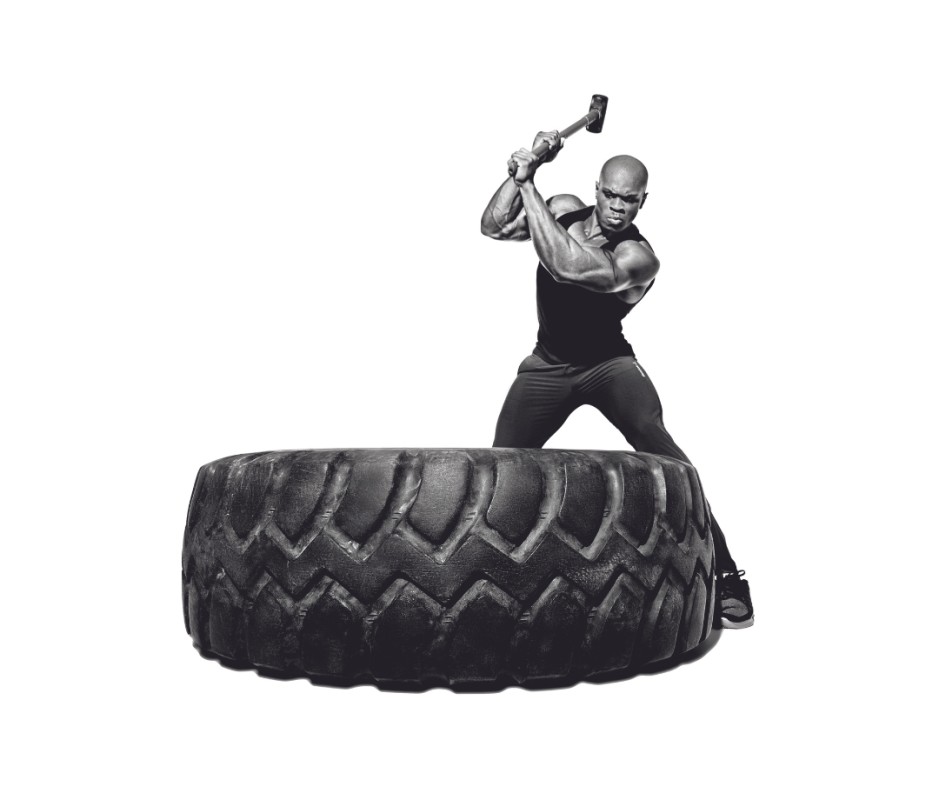
Marius Bugge
How to Do It
- Stand with your feet planted and slowly raise the sledgehammer up over your shoulder.
- As you swing the sledgehammer head behind you, bring your top hand toward the top of the handle.
- As you swing the sledgehammer down, push your hips back and bend your knees, sliding your upper hand down the shaft.
- That’s 1 rep.
How to Improve Brute Strength
Just because some people just have it doesn’t mean you can hone it, with the right training routine. “The thing about brute strength is that it has to be available, but you can’t be gassed after one rep—you have to be able to do something else,” Herbst says. “Twenty thousand years ago, you’d kill the mammoth, butcher the mammoth, then bring the mammoth pieces back to camp, so you have to have some endurance—that’s raw, brute strength.”
You also can’t always train at max levels to get and stay at peak brute-strength condition. In fact, as with any program, you need to start easier, with relatively low weight and higher reps (6–12), to get the form down pat. “Your form will deteriorate under max weight, so you have to get it right first,” Herbst says.
Next, you work in the five-rep zone at 65–75% of your max, going for up to eight sets, with a minute rest between to build your strength endurance. Do that for six weeks for a really solid base. “Then it’s time to get literally strong,” says Herbst. “To do that, you have to use near-max weights, doing singles, doubles, or triples, with sufficient rest that you can actually do that—it could be 7–10 minutes between sets, so you’re 90% recuperated from the last set.”

